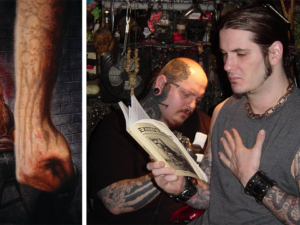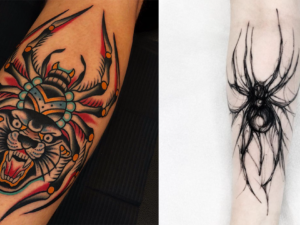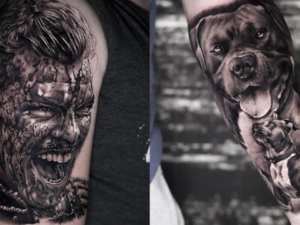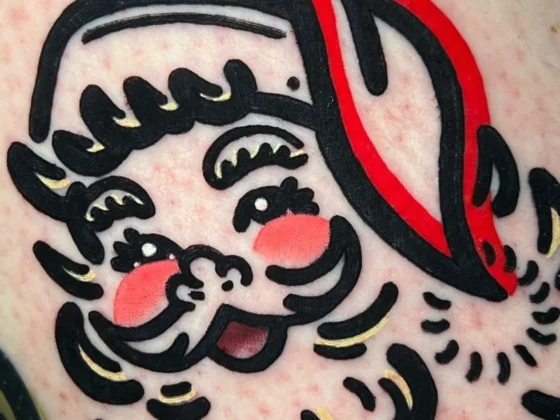Inked Mag
October 16th, 2018
Russian Prisoners’ Tattoos and their Gambling “Gangs”
Soviet-Russia era criminal gambling inside prison were high stakes. While "tea or cigarettes might be wagered,” fingers, ears, eyes, and even the “lives of other inmates” were also played for. The tattoo culture inside of the gambling ring is fascinatingly knit.
Soviet-Russia era criminal gambling inside prison were high stakes. While “tea or cigarettes might be wagered,” fingers, ears, eyes, and even the “lives of other inmates” were also played for. The tattoo culture inside of the gambling ring is fascinatingly knit.

Damon Murray, publisher of a book about Soviet prison ink, said that these playing cards were constructed in Soviet prisons and the correctional labor camps, known as the “zones”. However, these cards were extremely forbidden, and if the deck was discovered– or even just one card– your punishment would be that of defying administration, injecting drugs, or smuggling in alcohol. The usual penalty would be six months in an isolation cell. But the games kept on going.

The cards had to be made from scratch
The cards were made from two sheets of paper stuck together with “glue” made from chewed prison bread, passed through linen. Then, the sheets were “flattened under glass until dried, and then cut to size.”
What people gambled with were usually agreed upon before the game. “Criminals who gambled their body parts in a card game would do so to demonstrate their strength.” Failing to pay your debt could result in a tattoo punishment, such as “images of copulation.” However, in most cases, if the loser didn’t give what they agreed to gamble with, they would be labelled as a “suka” (bitch), knifed– and in most brutal cases– raped.

Murray said, “In one particular case, a criminal who lost his left hand in a card game couldn’t bring himself to cut it off and tried to run away. The authorities recaptured him and had him transferred to another camp, but his fate was sealed. In his absence, he was sentenced by a “skhodka” (a meeting of legitimate thieves). The criminals found out where he had been sent and arranged for the sentence to be carried out there.”
Tattoos as prisoners’ passports through jail
In Soviet era, tattoos marked prisoners’ status within the thieves’ world, similar to a uniform. But closer to the heart. They signified the achievements, failures, promotions, and demotions. “In thieves’ jargon, the traditional set of tattoos was known as a “frak s ordenami” (a tailcoat with decorations). These tattoos conveyed secret, symbolic information, which at first glance may have appeared familiar to everyone—a naked woman, a devil, a burning candle, and so forth.” However, they were essentially their passport.

If a prisoner had a tattoo that wasn’t truthful, they were “forced to remove then with a knife, sandpaper, a shard of glass, or brick.”
Card-suite groups in prison gambling
Groups of inmates belonged to different suits, which were illustrated through their tattoos, and enforced by the most powerful of thieves. King of clubs and spades were the most noble, and the red suits were the least dignified. The symbol of the hearts transformed into the status as the “woman” in the zone. If other inmates were to associate with them, their own status would descend.
The first letters of any given suit comprise the Russian phrase “Kogda Vyidu Budu Chelovekom,” meaning, “I’ll be a man when I get out.” “This is to confirm the beater’s intention confirming the bearer’s intention to follow a criminal path.”

Editor's Picks
Paul Booth Illustrates Cover for Pantera Graphic Novel
The revered tattoo artist created a cover for a graphic novel celebrating the 30th anniversary of “Vulgar Display of Power”
Scary Spider Tattoos
Spiders are terrifying, yet for some reason people sure do love to get tattoos of them














